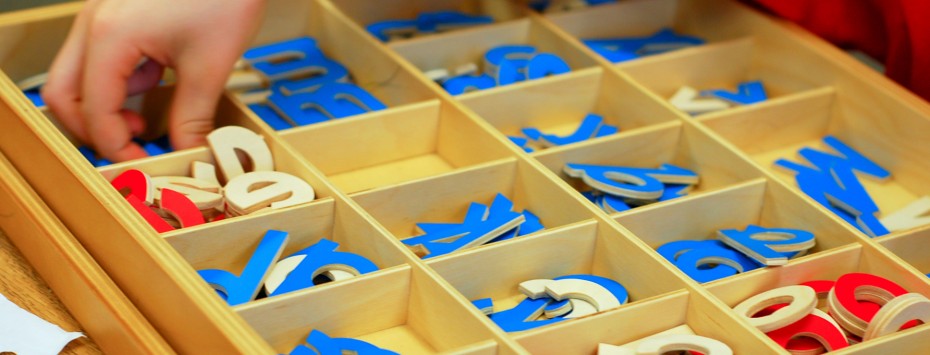Students at the Center; Structure at the Forefront.
Montessori education constitutes a major shift in how we think about what learning looks like, and how learning environments should be organized to support optimal development. This shift, which matches what neuroscience tells us about how the human mind works, comes down to two major concepts: student-centered activity and structure to support that activity.
The table below offers more detail on how that shift takes place within a Montessori classroom.
| Conventional Classroom | Montessori Environment |
|---|---|
| Textbooks, pencil, paper, and worksheets | Hands on materials, developed to enable discovery, self-correction, and independence; Specially developed reference materials |
| Intellectual and social development is disconnected | Working and learning matched to the social development of the child |
| Narrow, unit-driven curriculum | Unified, time-tested curriculum |
| Individual Subjects | Integrated subjects and learning based on developmental psychology |
| Block time, period lessons | Uninterrupted work periods |
| Single-graded classrooms | Mixed age classrooms |
| Students passive, quiet, at desks | Students active, talking with periods of spontaneous quiet, freedom to move |
| Students fit mold of school | School meets needs of students |
| Students leave for special help | Special help comes to students |
| Standardized, norm-referenced assessment | Process-focused assessment, skills checklist, mastery benchmarks |
Montessori education constitutes a major shift in how we think about what learning looks like, and how learning environments should be organized to support optimal development.

